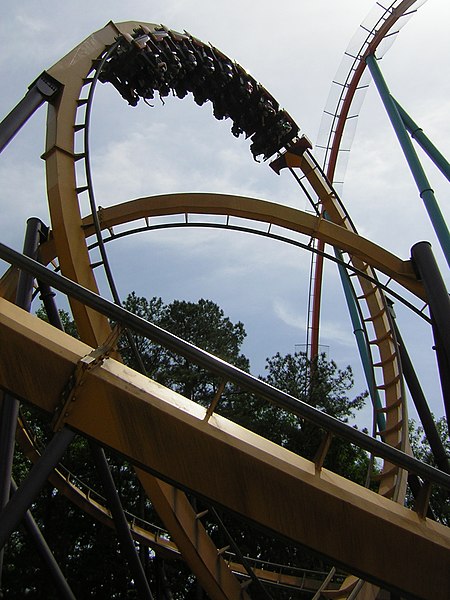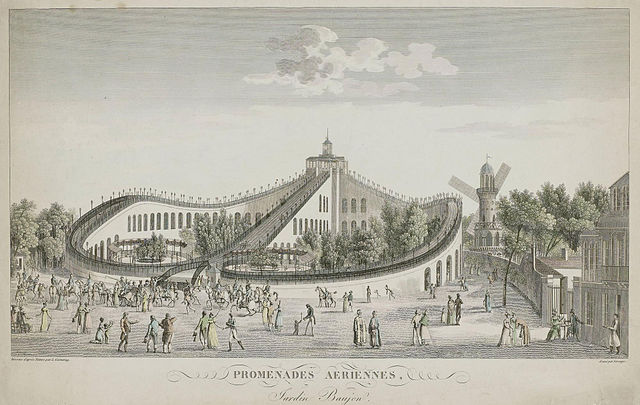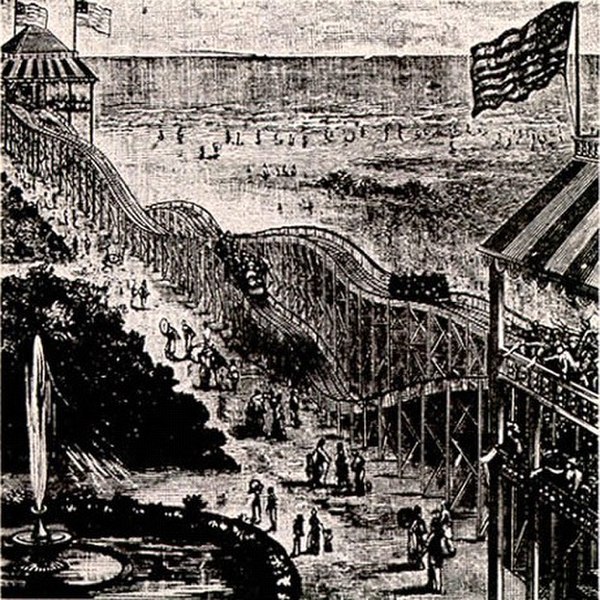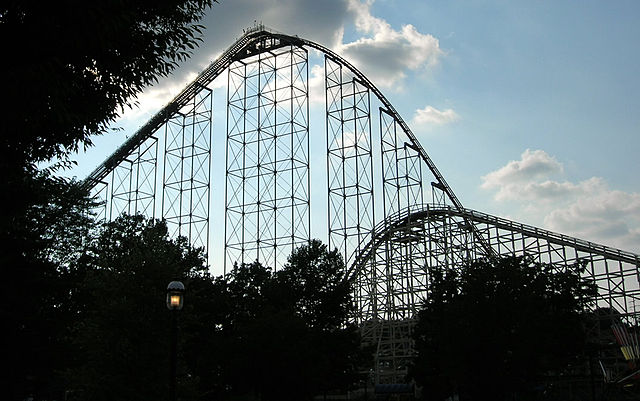A stand-up roller coaster is a roller coaster where passengers aboard a train stand throughout the course of the ride. The first manufacturer to employ the format was TOGO, a Japanese company that converted two traditional roller coasters in 1982 to stand-up configurations. Arrow Dynamics followed suit in the United States the following year with their own conversion. The first roller coaster designed from the ground up as a stand-up coaster was King Cobra, built by TOGO, which opened at Kings Island in 1984. Intamin and Bolliger & Mabillard (B&M) have also designed stand-up models beginning in the 1990s, with the latest opening in 2023 as Pipeline: The Surf Coaster in SeaWorld Orlando.
Shockwave, a former stand-up coaster that featured a zero-g roll inversion.
Trains feature saddle seats that move vertically to accommodate various heights. (The Riddler's Revenge at Six Flags Magic Mountain)
Georgia Scorcher, a 1999 stand-up coaster.
The first Bolliger & Mabillard stand-up coaster, Iron Wolf.
A roller coaster is a type of amusement ride employing a form of elevated railroad track that carries passengers on a train through tight turns, steep slopes, and other elements designed to produce a thrilling experience. Trains consist of open cars connected in a single line, and the rides are often found in theme parks around the world. Roller coasters first appeared in the 17th century, and LaMarcus Adna Thompson obtained one of the first known patents for a roller coaster design in 1885, based on the Switchback Railway which opened a year earlier at Coney Island.
The Scenic Railway at Luna Park, Melbourne, is the world's second-oldest operating roller coaster, built in 1912.
The Promenades-Aériennes in Paris, 1817
Thompson's Switchback Railway, 1884
Steel Force (left) and Thunderhawk (right), two roller coasters at Dorney Park & Wildwater Kingdom in Allentown, Pennsylvania. Steel Force is the eighth longest steel roller coaster in the world.








